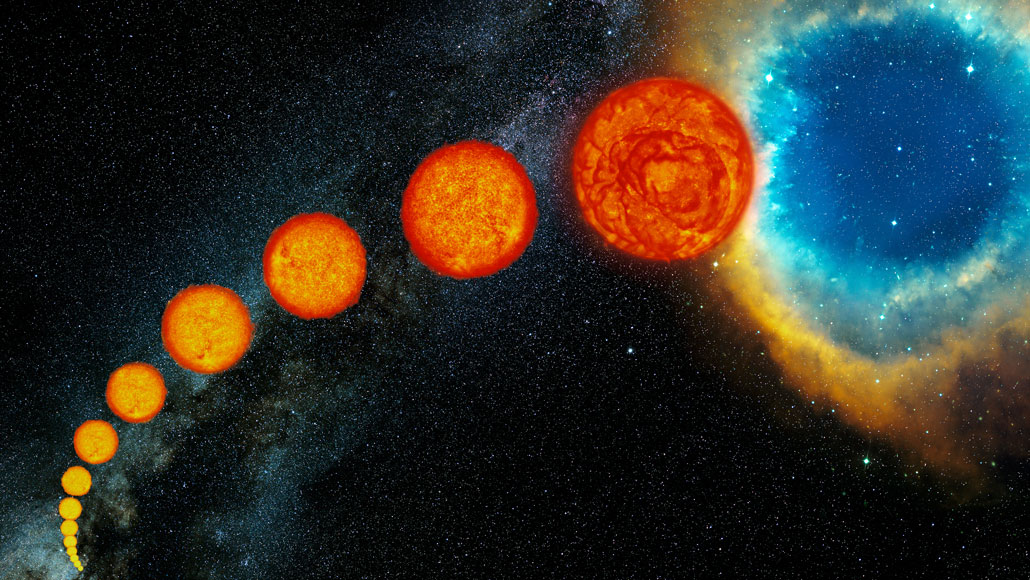Stars may keep spinning fast, long into old age
The idea that older stars continually slow their rotation may be wrong

SLOWDOWN Sunlike stars start as fast-spinning balls of gas (illustrated at left). As this type of star ages, its spin slows and it puffs up, before dying as a nebula (middle and right). But the spin of these aging stars might not slow as much as thought.
S. Steinhöfel/ESO